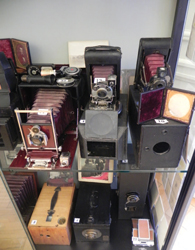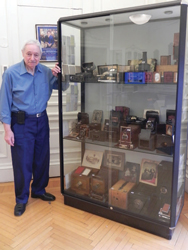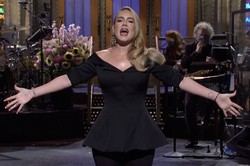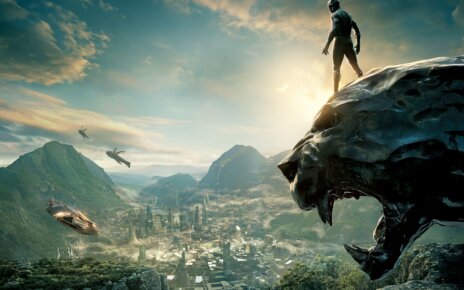The Guggenheim Library is currently hosting an exhibit featuring historical cameras and photographs from the late 19th and early 20th centuries, presented by Enoch Nappen, associate professor for political science and sociology.
There are over 30 different cameras and photograph equipment in the display, decorated with 61 various antique photographs from the 1800’s. The exhibit is a part of Nappen’s collection and discoveries over the years.
Eleanora Dubicki, an associate librarian at the University and avid fan of photography, helped set up the exhibit with Nappen. “He’s got a really interesting assortment of cameras, starting from some of the oldest,” Dubicki said.
The cameras range in size from a large box to small pocket versions with some hidden in a pocket watch or a woman’s vanity case. The display also features a spy camera made in Germany, a finger print camera, and cameras used by newspaper photographers. There are also various photo albums and photograph equipment, including old tools like exposure meters and lanterns for developing film.
Nappen explained a large camera that’s displayed known as a detective camera was named so because “it was a wooden box. People didn’t know it was a camera… [Detectives] could take pictures without people knowing.”
The display shows how film has progressed over the years with an assortment of old photograph film material and style, like daguerreotype, ambrotype, ferrotype, cartes de visite and cabinet photos.
There are six different groupings of photographs that feature authors, international royalty, and civil war figures such as Charles Dickens, Queen Victoria, Thaddeus Stevens, and Garibaldi.
The display also features well known actors at the time like Maurice Barrymore (Drew Barrymore’s great-grandfather), Lily Langtry and Henry Irving.
“Some of them are well known people that he’s selected, and some are regular, ordinary,” Dubicki said, noting a picture of two young boys as her favorite. “He wanted to show both families as well as some official portraits of different famous people.”
Nappen admitted that he “never had a camera as a kid, never took a picture” but became interested in old cameras and pictures when preparing for a political parties and elections class at the University.
“I began to go to flea markets to see if I could collect campaign materials,” Nappen said, whom later compiled a book on political campaigns and materials like photography. He began collecting the cameras and photographs as people were clearing their houses, trying to either sell or destroy whatever they had.
“I thought ‘Oh my god, these are historical things, they shouldn’t be destroyed,” Nappen said. “I became interested in not only photography of political people, but photography of other people, and great photographers. It became a real hobby for me, even though it’s not directly my field. I went crazy over the history of these things.”
 Dena Massa, a library technician at the University, thought it was “absolutely incomprehensible” that people would try to destroy these cameras. “The value of these cameras, you can never see again,” Massa said. “It’s not something you can sell or destroy, it’s wrong.”
Dena Massa, a library technician at the University, thought it was “absolutely incomprehensible” that people would try to destroy these cameras. “The value of these cameras, you can never see again,” Massa said. “It’s not something you can sell or destroy, it’s wrong.”
Nappen chose these photographs from his collection as a “sample” of the time, not wanting to display Presidents but other historical and famous figures. “People ask how I could include John Wilkes Booth, it’s because he was an actor,” Nappen said.
“Wealthy people going to Europe back in the 1880’s and so on, they go and have their photos taken by famous photographers,” Nappen explained. “While they were there, the photographer would sell photos that he took of famous people. They would buy those, and sometimes the famous people themselves would use them as calling cards.”
“We like to bring these types of exhibits to the library so students see something different… Dr. Nappen brought boxes and boxes over, and people kept stopping and asking about them,” Dubicki said. “It’s something different, and it definitely ties into our art and photography department really well.”
“I think now we’re spoiled, because you can take as many pictures as you want. Back then, if you didn’t get it on the first shot, you were out of luck,” Massa said. “If you’re into cameras, you have an appreciation of the photos.”
The exhibit will be on display at the Library until December 15. Nappen will be giving a lecture on the cameras and photographs in the seminar room at the Library at 4:30 pm on November 17 and all are welcome to attend.
PHOTO COURTESY of Eleanora Dubicki



